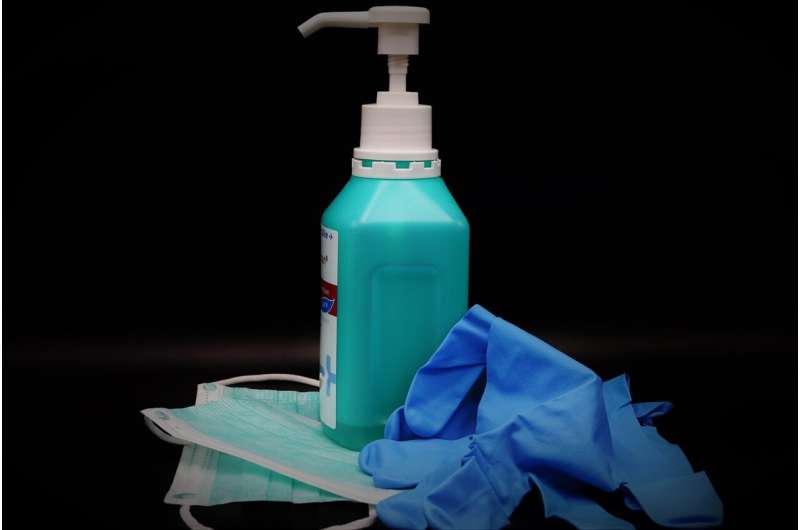This article has been reviewed according to Science X's editorial process and policies. Editors have highlighted the following attributes while ensuring the content's credibility:
fact-checked
peer-reviewed publication
trusted source
proofread
New guidance for infection prevention in acute care settings

Five medical societies have published a set of recommendations for operationalizing strategies for infection prevention in acute care settings that account for conditions within the facility, including the culture and communications style of teams, hospital policies, resources available, leadership support and staff buy-in.
"There is no best way to implement a practice, but implementation need not be overly complex," said Joshua Schaffzin, MD, a pediatric infectious disease physician and a senior author of Implementing Strategies to Prevent Infections in Acute Care Settings published as a new section of the Compendium, a set of guidelines for infection prevention. "This new section is a compilation of a number of options and practical tools you can use to find your best way to implement successfully. It's a way to take the Compendium from paper to bedside to improve practices for patient safety."
The new chapter summarizes seven models for implementing other Compendium recommendations for preventing common healthcare-associated infections. It is meant to help bridge the "knowing-doing" gap, a term that describes why health care practices often diverge from published evidence to prevent infections that harm patients.
The complexity of health care systems makes it difficult for health care teams to implement best practices in infection prevention. Understanding factors that promote and hinder adoption within a given setting is an important step to identifying the best framework to deploy in that setting.
"Spending time listening and exploring your context, including local factors such as operational support, informatics resources, familiarity and experience, willingness to change, and safety, is of tremendous value and will guide you to success," Schaffzin said. "People are rarely eager to change. It's ok to be discouraged, but don't give up."
Schaffzin compared establishing new infection prevention strategies to convincing a young child to try a new food. Sometimes it's easy, and other times you have to try different tactics, but you can't force new behaviors.
"Studies in implementation science make it clear that identifying effective interventions is a necessary first step before transferring them into real-world settings in an intentional process," said Kavita Trivedi, M.D., Director of Clinical Guidance and Communicable Disease Controller at the Alameda County Public Health Department in California and the lead author of the chapter. "Here we provide the reader with the resources to think about implementation and evaluate the contextual determinants of behavior in order to design more successful, customized interventions."
Implementing Strategies to Prevent Infections in Acute Care Settings is a new section to the Compendium, first published in 2008. The Compendium is sponsored by the Society for Healthcare Epidemiology (SHEA) and is the product of a collaborative effort led by SHEA, with the Infectious Diseases Society of America, the Association for Professionals in Infection Control and Epidemiology, the American Hospital Association, and The Joint Commission, with major contributions from representatives of several organizations and societies with content expertise. It is a multiyear, highly collaborative guidance-writing effort by more than 100 experts from around the world.
An update of strategies to prevent catheter-associated urinary tract infections will be published in coming weeks. The societies also recently updated strategies for preventing methicillin-resistant Staphylococcus aureus infections, Clostridioides difficile infections, surgical site infections, central line-associated bloodstream infections, ventilator and non-ventilator associated pneumonia and events, and strategies to prevent health care-associated infections through hand hygiene.
Each Compendium article contains infection prevention strategies, performance measures, and approaches to implementation. Compendium recommendations are derived from a synthesis of systematic literature review, evaluation of the evidence, practical and implementation-based considerations, and expert consensus.
More information: Implementing Strategies to Prevent Infections in Acute Care Settings, Infection Control and Hospital Epidemiology (2023).


















